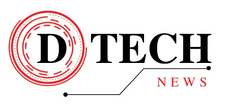# Unlocking AI Potential: DeepMind’s Michelangelo Benchmark and the Future of Long-Context LLMs 🔍🧠
The continual evolution of **artificial intelligence (AI)** is reshaping the technological landscape, with DeepMind at the forefront of innovation through its latest creation, the Michelangelo Benchmark. This pioneering development offers profound insights into the capabilities and limitations of long-context language models (LLMs), propelling our understanding of AI forward and paving the way for groundbreaking machine learning advancements.
## Decoding Long-Context Language Models
Long-context **language models** are sophisticated AI systems engineered to process and construct human-like text by understanding extended textual context. By imitating human cognitive abilities and conversation patterns, these models interpret vast amounts of contextual information. DeepMind has consistently led efforts in optimizing these systems, striving to replicate complex human cognitive processes with precision and efficiency.
### Introducing the Michelangelo Benchmark 🎨
The Michelangelo Benchmark, aptly named to honor the legendary Renaissance artist, represents a comprehensive framework tailored to evaluate the boundaries of long-context LLMs. Just as Michelangelo transcended artistic norms, this benchmark endeavors to transcend the barriers of AI capabilities. Its core objective is to evaluate how well these models engage with extended language sequences, identifying both their strengths and areas for improvement through meticulous testing.
This benchmark is crucial for several reasons:
–
–
–
### Revelations from DeepMind’s Studies
The adoption of the Michelangelo Benchmark has provided DeepMind with invaluable insights into the functional dynamics of LLMs across diverse contexts. One key revelation is the inherent trade-off between model complexity and processing efficiency—a phenomenon where larger, more layered models exhibit superior comprehension but demand greater computational resources and time.
Moreover, the findings illustrate that while LLMs showcase effective processing capabilities with medium-length texts, their proficiency diminishes with increasing context length. This highlights both the potential and current limitations of AI systems, underscoring the necessity for ongoing enhancement to conquer the challenges associated with processing large data sets more efficaciously.
## Implications for Future AI Development 🚀
The achievements realized through the Michelangelo Benchmark delineate crucial pathways to enhance AI efficiency and versatility. By discerning the constraints of existing models, AI researchers and developers can innovate strategies to surmount these obstacles. Areas for concentrated innovation include:
– **Optimizing computational algorithms:** Streamlining algorithms to boost processing speed without compromising understanding.
– **Improving model architectures:** Refining model frameworks to achieve more sustainable and scalable AI solutions.
– **Interdisciplinary collaboration:** Incorporating insights from computer science, linguistics, and cognitive psychology to sharpen AI’s language processing capabilities.
This benchmark also emphasizes the importance of interdisciplinary fusion, leveraging knowledge from various fields to refine AI’s language processing proficiencies.
### Conclusion: Paving the Path Forward
DeepMind’s Michelangelo Benchmark inaugurates a transformative trajectory in AI development. By deepening our understanding of long-context LLMs, it enables more human-like interactions with machines. While the road to fruition may present several challenges, the progress spurred by this innovation underscores the immense potential and transformative impact of AI.
Stay connected as we delve deeper into the intriguing advancements in the realm of artificial intelligence! 🌟 Each benchmark and discovery propels us closer to monumental breakthroughs in technology, enhancing life’s quality and productivity across the globe.
With these insights, we stand on the brink of an AI-empowered future where machines attain unprecedented levels of understanding and functionality, revolutionizing human interaction with technology and ensuring a future brimming with promise and possibility.



















































